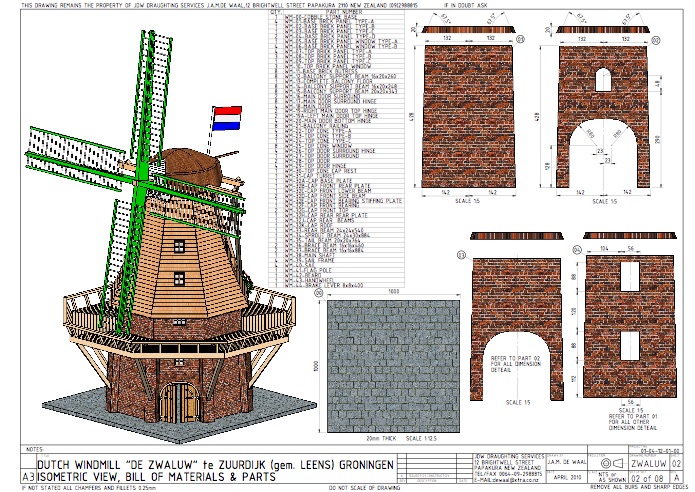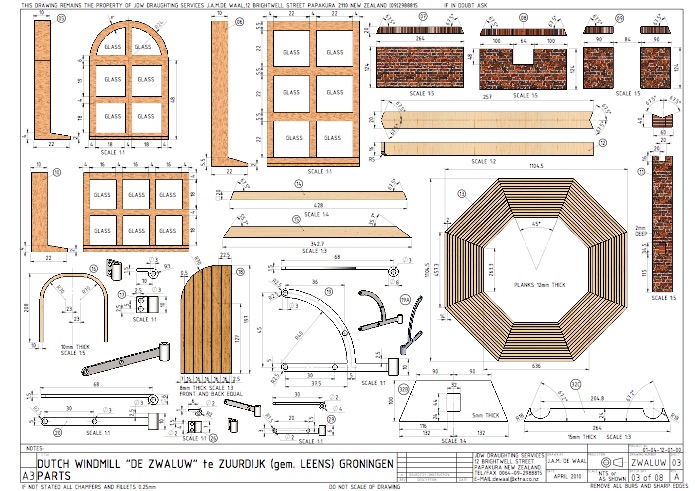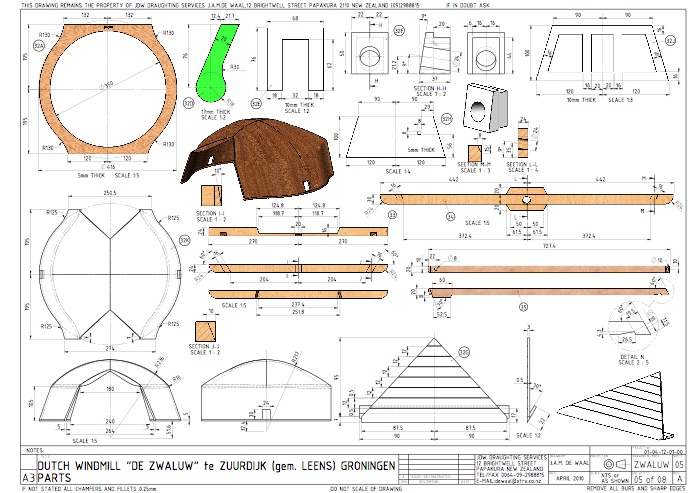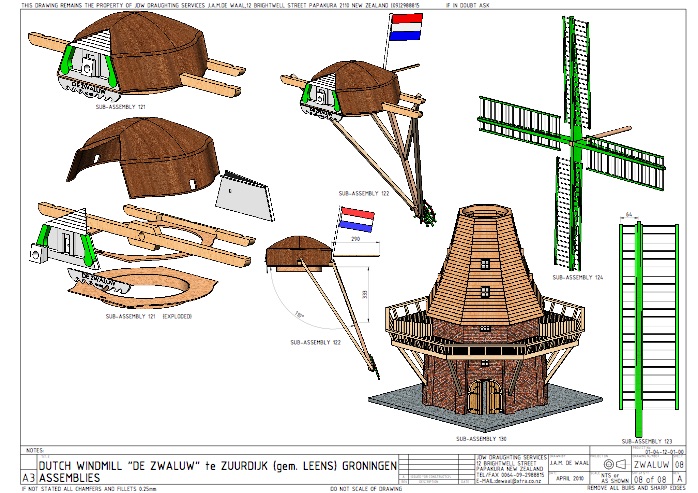

Back in 1993 I received a large crate, from Holland, with the last remaining LGB railway stuff and a lot of other things which my late father had collected over the years. Among all that I found some cardboard kits, the ones you cut out with a pair of scissors and then glue the whole thing together.
One in particular attracted my attention and that was a windmill called “DE ZWALUW” that was published by the ANWB.
When I got my Solidworks 2006 I was looking for some challenging projects to draw up and to improve my skills. So I took up this challenge and started to draw up this windmill using the cardboard kit. I had to use some imagination to realize some of the thicknesses of materials since there were no thicknesses in the cardboard kit.
Initially I drew this windmill in such a way that a lot of components were as one unit, and the dimensioning of it was very complicated and a lot of views and sub drawing had to be made to clarify things. However, I recently decided to re-draw this windmill with its individual components, where possible,
The scale of the cardboard model would have suited an LGB scale railway layout. However, the drawings I have produced are of 1:20 approx which make it possible for outdoor display.
If there are people who would like to build this windmill on a smaller scale, they simply have to divide the dimensions by a factor of their own choosing.
If this windmill is being built, and is going to sit outside in all weather conditions, then all the materials used have to be suitable. The colour scheme is left to the builder.
I have not build this windmill myself, so it is difficult for me to say how to construct this mill, this challenge I leave it up to the person who would like to build one. The only thing I could say is that the majority of the materials will be timber/wood, mainly pine, and the ferrous materials, such as hinges, are made from brass or steel plate, and then painted as protection.
On the drawing the base is shown as being made of brick or stonework, I do not know whether or not suitable brick is available. If not, the builder can use treated plywood and paint it to his or her liking.
Another way of making the stone base is to pour some concrete in a mould and then scratch the stonework into the concrete and paint it afterwards .An electric motor could be added which turns the sails in no wind conditions. Also some internal lights could be placed inside the mill to give some romance during the dark hours.
Click on drawings to download.
For personal use only.
Although drawings reproduce well on this website, they are even better as saved downloads.
Please let the editor know if you are building one of these or other projects to Julius’ drawings.









